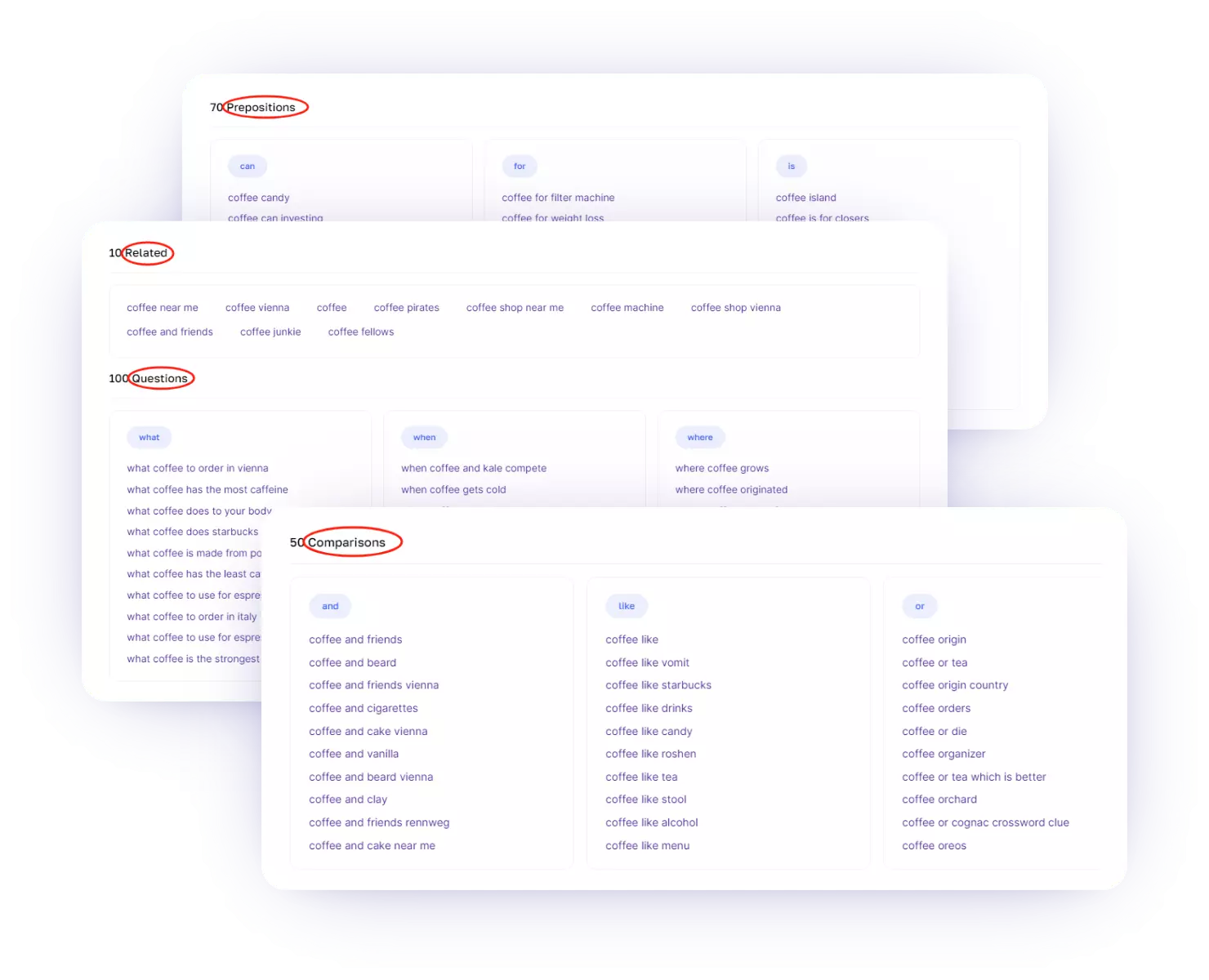
Keyword research is the cornerstone of successful online content. Whether you're a blogger, business owner, or digital marketer, understanding how to find low difficulty keywords can significantly impact your website's visibility and organic traffic.
In this article, we'll delve into the strategies and tools that can help you uncover hidden gems in the vast landscape of keywords, enabling you to optimize your content for better search engine rankings.
What Is a Low Difficulty Keyword?
So what does low difficulty keywords mean?
A low-competition keyword refers to a term or phrase with a limited number of businesses or websites vying for search engine rankings, translating to low competition.
Key characteristics defining low-competition keywords include:
1. Long-tail phrases (consisting of three or more words)
2. Exceptionally specific keywords
3. Directly pertinent to your business offerings
4. Feasible to achieve a high ranking for
5. Lower search volume
These keywords present excellent opportunities for boosting website traffic, given their scarcity of high-authority, topic-specific websites attempting to secure rankings.
Most frequently, forums and directory sites tend to dominate the search results for low-competition phrases.
How to Find Low Difficulty Keywords?
Here is how you can find low difficulty keywords.
Identifying Your Niche

The first step in finding low difficulty keywords is to identify your niche. Understanding your target audience, industry, and the unique value you provide is essential.
Consider the specific topics and themes that resonate with your audience and align with your business objectives.
By narrowing down your focus, you can uncover relevant keywords that are more accessible and less competitive.
Use Long-Tail Keywords
Long-tail keywords are phrases that consist of three or more words. While they may have lower search volumes compared to broader terms, long-tail keywords are often less competitive.
These keywords cater to more specific search intents, allowing you to connect with a highly targeted audience.
Niche Finder's Keywords Generate tool can help you find long-tail keywords related to your niche. Take "coffee" as an example, you can find numerous related keywords for content creation:

Leveraging Keyword Research Tools
Several powerful tools can streamline the process of finding low difficulty keywords. Google's Keyword Planner is an excellent starting point, providing insights into search volumes, competition, and suggested bid prices for paid advertising.
Ahrefs and SEMrush offer comprehensive keyword research features, including competitor analysis, keyword difficulty scores, and related keyword suggestions. These tools empower you to make informed decisions based on data rather than intuition.
Analyzing Competitor Keywords
Analyzing the keywords your competitors are targeting can provide valuable insights into potential low-difficulty keywords.
Tools like SEMrush and Ahrefs allow you to enter a competitor's domain and view the keywords they rank for.
Focus on identifying keywords with moderate to low difficulty scores that align with your content strategy. This approach helps you identify gaps in your competitor's keyword targeting and capitalize on opportunities they may have overlooked.
Examining Search Intent
Understanding user search intent is crucial for effective keyword targeting. Google aims to deliver results that align with the user's intent, whether it's informational, navigational, or transactional.
Tailor your keyword strategy to match the intent behind specific searches.
Tools like Google Trends can help you uncover trending topics and common questions related to your niche, allowing you to create content that directly addresses user queries.
Checking Keyword Difficulty Scores
Most keyword research tools provide a metric known as keyword difficulty (KD) to assess the competition for a particular keyword. Aim for keywords with moderate to low difficulty scores, as these are more attainable for websites with lower domain authority.
Strike a balance between relevance and difficulty, ensuring that the keywords you target align with your content goals while offering a realistic chance of ranking.
Should You Avoid High-Competition Keywords?
Don't avoid high-competition keywords just because they pose a greater challenge. It's crucial to acknowledge their difficulty and recognize that competing for these keywords in search engine rankings demands more time and effort.
This is where the value of low-competition keywords becomes evident. They serve as a sort of shortcut, allowing you to achieve quicker rankings in search engines compared to the more challenging, lucrative keywords.
While it's advisable to create content and center your efforts around high-competition keywords from the onset of your SEO journey, it's the low-competition phrases that play a pivotal role.
Especially in the early stages, these keywords act as a foothold in the competitive landscape, aiding you in establishing domain authority and increasing website traffic.
They provide a strategic entry point before tackling the more formidable keywords that, in the long run, are likely to yield higher customer conversions.
Read More: Long Tail vs Short Tail Keywords
Conclusion: How to Find Low Difficulty Keywords
Low-difficulty keywords can be your best friend if you are a new SEO endeavor.
By understanding your niche, leveraging long-tail keywords, utilizing powerful research tools, analyzing competitor strategies, and aligning with user intent, you can uncover valuable keywords that enhance your website's visibility and drive organic traffic.
Remember, the key to successful keyword research is a strategic and data-driven approach that evolves with the ever-changing landscape of search engine algorithms.

